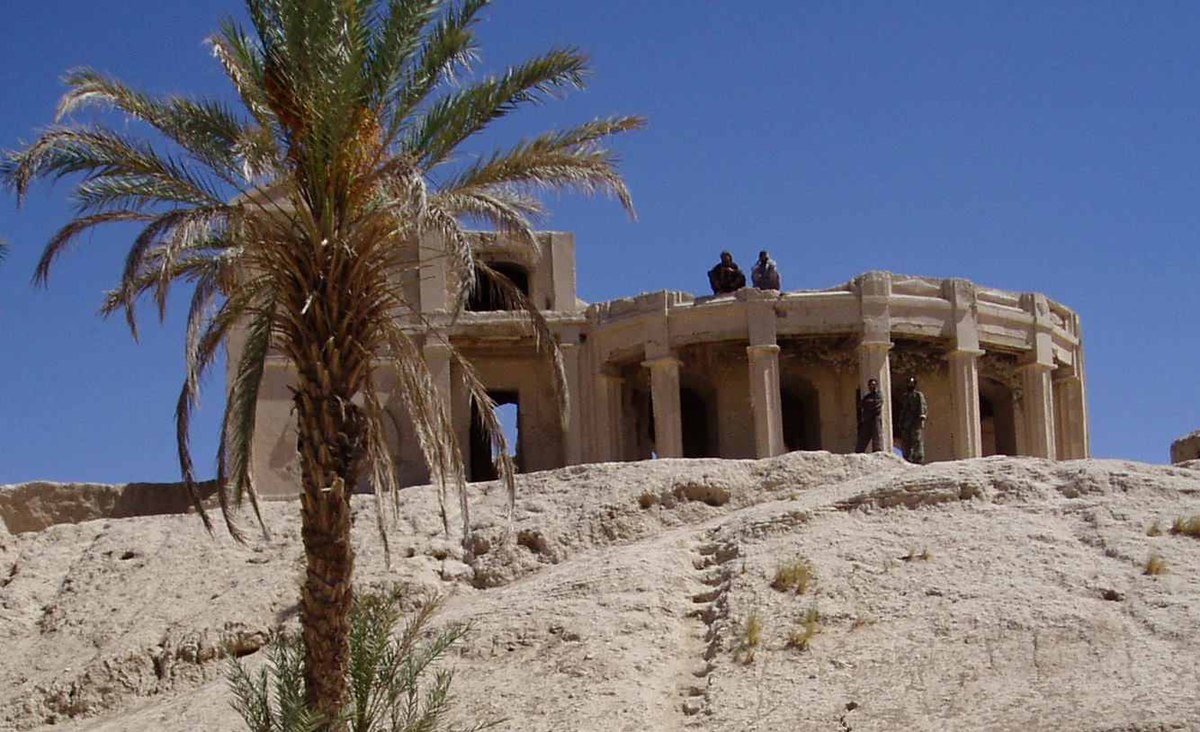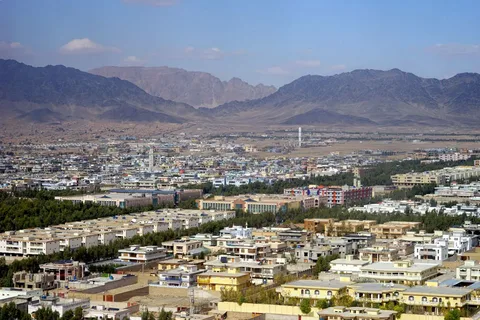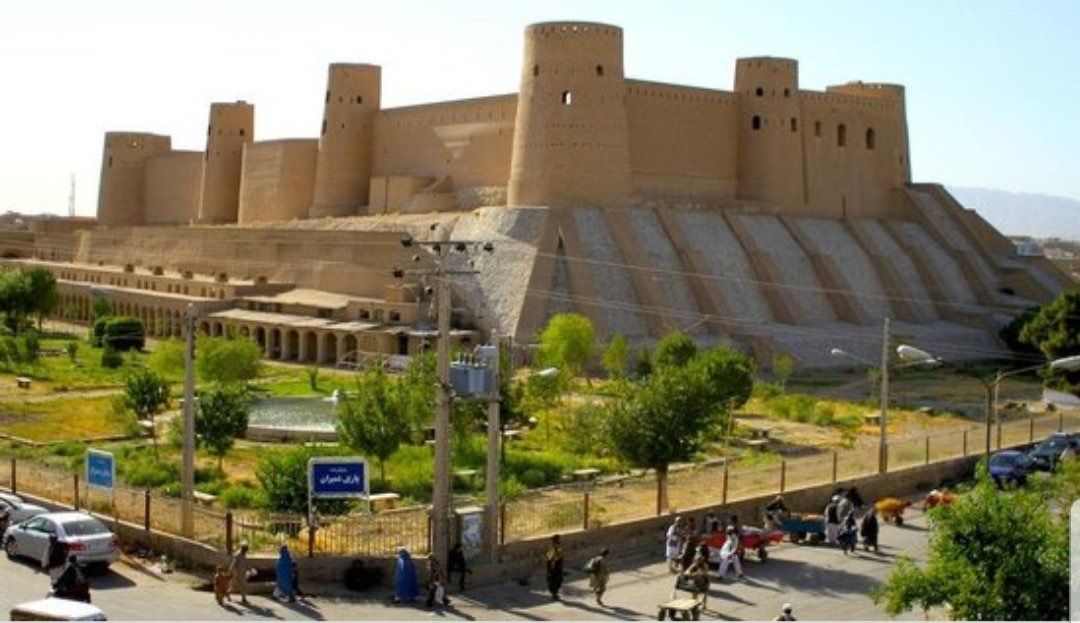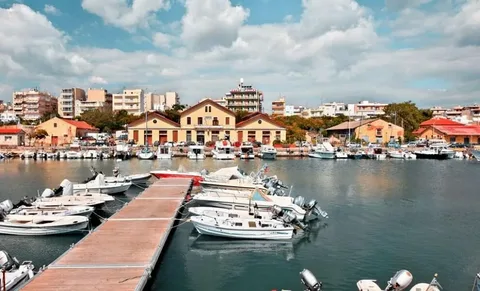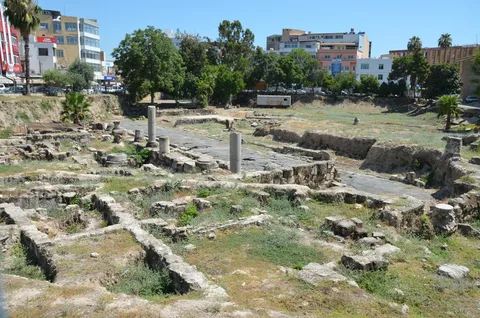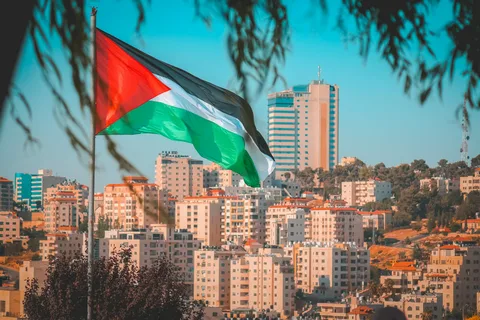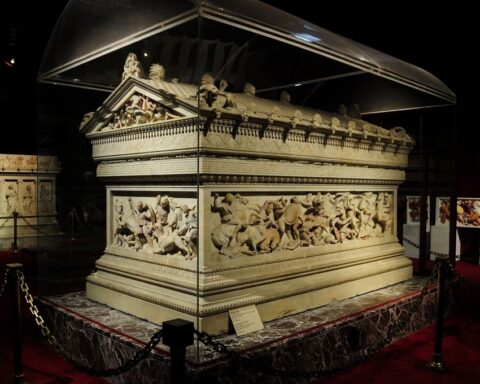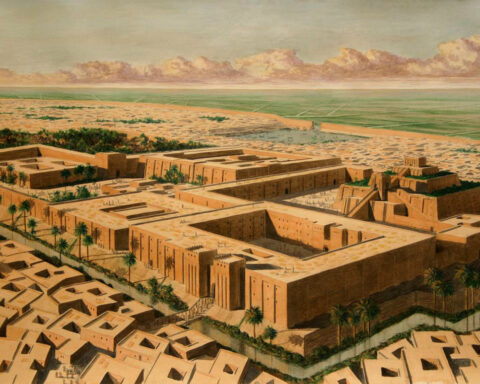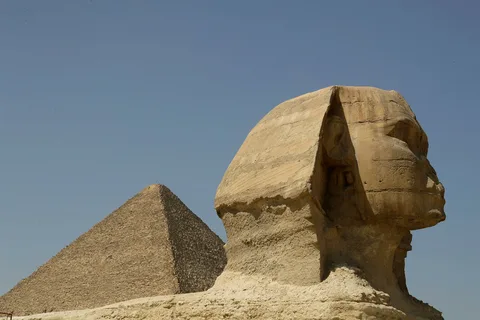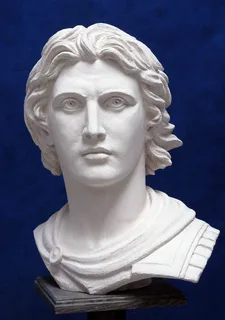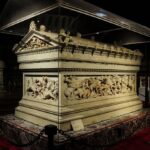Cities in Asia
Foundations in Persia and Bactria
Ancient Persia and Bactria were two distinct regions that played significant roles in the history of human civilization. Persia, also known as Iran, was an empire that existed from around 550 BCE to 651 CE. It was a vast territory that covered modern-day Iran, parts of Iraq, Afghanistan, and Turkey. On the other hand, Bactria was a region located in what is now northern Afghanistan.
Foundations in Persia were influenced by various cultures, including the Elamites, Assyrians, Babylonians, and Medes. The Achaemenid Empire, which ruled from 550 to 330 BCE, left an indelible mark on the region’s architecture, art, and engineering. Some notable foundations in Persia include:
Persepolis: The ceremonial capital of the Achaemenid Empire, built during the reign of Darius I.
Pasargadae: The tomb of Cyrus the Great, the founder of the Achaemenid Empire.
Susa: An ancient city that served as a major center of learning and culture.
As for Bactria, its foundations were shaped by the Greeks, specifically Alexander the Great’s conquests. When Alexander invaded Persia in 330 BCE, he founded several cities that would become significant centers of culture and trade. Some notable cities founded by Alexander the Great include:
Alexandria on the Oxus (modern-day Khulm): A major city located near the confluence of the Oxus River.
Bactra: The capital city of ancient Bactria, known for its impressive architecture and cultural achievements.
Herat (modern-day Hari): A strategic city situated on the trade routes between Central Asia and India.
The legacy of Alexander’s foundations in Persia and Bactria can still be seen today. These cities have played a significant role in shaping the region’s history, culture, and architecture, influencing everything from art and literature to engineering and technology.
Kandahar (329 BCE)
Alexander the Great’s conquests took him to various regions across ancient Asia, one notable stop being the city of Kandahar in present-day Afghanistan. Established at around 329 BCE, it was a pivotal location for Alexander’s military campaigns, as well as an important hub for trade and cultural exchange.
Kandahar, situated on the crossroads of the Silk Road, held significant strategic importance during Alexander’s era. This ancient city served as a vital stopping point between the Eastern provinces of the Persian Empire and the Western reaches of the known world.
The site where Alexander the Great founded Kandahar boasted remarkable natural advantages, with access to both fertile lands and the surrounding rugged terrain providing an excellent vantage point for military observation. The area’s diverse geography also facilitated easy trade between merchants traveling from distant territories.
During Alexander’s time, Kandahar’s strategic position played a critical role in his overall military strategy. From this base, he was able to launch successful campaigns against the neighboring regions and secure vital resources for his army. The city also served as an essential stopping point for weary soldiers and officers.
The influence of Alexander’s founding of Kandahar can be seen in the cultural heritage left behind by the ancient Greeks. It is evident that Greek culture had a lasting impact on the local population, leading to the blending of Eastern and Western traditions that characterizes this city to this day.
Throughout history, Kandahar’s rich legacy has been marked by numerous dynasties and empires rising and falling. This resilient metropolis stands as a testament to its enduring importance within the region’s complex tapestry of cultures and historical events.
Today, Kandahar continues to embody its rich history, serving as an important archaeological site where travelers can uncover remnants of ancient civilizations while gaining insight into Alexander’s legendary campaigns.
Herat (330 BCE)
Heraclides Clementi’s historical records indicate that the city of Herat was established by Alexander the Great during his conquests of present-day Afghanistan.
However, it is essential to clarify that Alexander did not found Herat from scratch, as archaeological findings suggest that there were already ancient settlements in the area before his arrival.
The city was strategically located at the crossroads of major trade routes between Central Asia and the Mediterranean region, which made it an ideal stopover for merchants and travelers.
Herat’s significance as a cultural hub cannot be overstated; it has been an important center for learning, art, and architecture throughout history, with various dynasties leaving their mark on the city’s rich heritage.
Alexander’s military campaigns in 330 BCE saw him defeat the Persian satrap, Saisak, and then take possession of Persepolis, but Herat was not directly conquered by Alexander himself; instead, it remained under the control of local rulers for a period before eventually being incorporated into the Hellenistic kingdom.
Excavations have uncovered remains from various periods in Herat’s history, including ancient Sogdian and Greek artifacts that reflect the city’s importance as an urban center and cultural melting pot during the Hellenistic era.
Today, Herat is one of Afghanistan’s major cities and a significant commercial hub, with many remnants of its rich past still visible in its architecture and cultural heritage.
Alexandria Arachosia (330 BCE)
Alexandria Arachosia, located in modern-day Afghanistan, was one of the several cities founded by Alexander the Great in 330 BCE. This city was established in what is now Kandahar Province and played a significant role in the ancient world.
The name “Arachosia” is derived from the Arachoti people, who were an ancient tribe that inhabited the region. Under Alexander’s rule, the city flourished as a major center of trade and commerce, connecting the East with the West through its strategic location on the Silk Road.
Alexandria Arachosia was part of the larger province of Arachotia, which stretched from the Helmand River in the west to the Indus River in the east. This region was an important hub for the ancient trade routes and cultural exchanges between the Persian Empire and other civilizations.
Archaeological evidence suggests that Alexandria Arachosia had a sophisticated infrastructure, including a fort, a palace, and public buildings. The city’s architecture was influenced by Greek and Persian styles, reflecting Alexander’s vision of creating a cosmopolitan city that blended different cultures and traditions.
The city also became an important center of learning and culture, attracting scholars and philosophers from various parts of the ancient world. It was said to have had a famous library, rivaling the Great Library of Alexandria in Egypt, which housed a vast collection of books and scrolls on subjects ranging from philosophy to medicine.
Despite its significance, Alexandria Arachosia declined after Alexander’s death in 323 BCE, when his empire was divided among his generals. The city eventually fell under the control of various regional powers, including the Seleucid Empire and later the Mauryan Empire in India. However, its legacy as a center of culture and learning continued to shape the history of the region.
Today, archaeological excavations at the site of Alexandria Arachosia have uncovered remains that shed light on its past. The discovery of Greek coins, pottery, and other artifacts confirms the city’s status as an important cultural hub in ancient times.
The study of Alexandria Arachosia has provided valuable insights into the impact of Alexander’s conquests on the ancient world. It serves as a reminder of the enduring legacy of his vision for a united and diverse civilization, which continues to inspire people across cultures and borders.
Cities in the Levant
Foundations in Mesopotamia and Phoenicia
Mesopotamia, which translates to “land between the rivers,” was home to some of the earliest civilizations. The area is situated in modern-day Iraq, Kuwait, and parts of Syria, Turkey, and Iran. The two major rivers that flow through Mesopotamia are the Tigris and Euphrates.
The Sumerians built their cities with impressive architecture, often surrounded by defensive walls for protection from invaders. They used mud bricks to construct these structures, which helped them stand the test of time. The Sumerian city-states were often at odds with one another, but they shared a common culture and language.
The Babylonians later built on top of the Sumerian cities, developing new architectural styles and incorporating elements from their predecessors. The Hanging Gardens of Babylon, said to be one of the Seven Wonders of the Ancient World, is an example of Babylonian architecture.
Phoenicia was a region in modern-day Lebanon and Syria that flourished between 1500 BC and 300 BC. The Phoenicians are famous for their extensive maritime trade networks, which allowed them to establish colonies throughout the Mediterranean. They built impressive cities with beautiful harbors, temples, and marketplaces.
The Phoenician city of Tyre was a major commercial center due to its strategic location on an island off the coast of Lebanon. The city’s harbor was surrounded by massive walls, protecting it from invaders. Tyre is also famous for its cedar forests, which were highly prized for their beauty and durability.
Alexander the Great founded several cities in Egypt after his conquests. One of his most notable cities was Alexandria, which became a major center of culture and learning under Ptolemaic rule. The city was known for its stunning architecture, including the famous Library of Alexandria, which housed over 700,000 volumes.
The city of Pergamon, also founded by Alexander, was located in modern-day Turkey and played an important role as a center of culture and learning. The ancient Greeks were particularly proud of their artistic achievements, and Pergamon is home to some of the most impressive architectural ruins from that era.
Tell elUmeiri (331 BCE)
Tell el-Umeiri, also known as El Umeireh or Umm er-Rasas, is a historical site located in modern-day Jordan. It was an ancient city that dates back to the Roman period and has undergone various transformations throughout history.
However, one of its most notable periods of development occurred in 331 BCE when Alexander the Great passed through the region during his conquest of Persepolis. At this time, it is believed that Alexander founded a new city at Tell el-Umeiri. However, some historians argue that it may not have been a major foundation but rather a temporary camp or fortified settlement established to facilitate further military campaigns.
As part of the wider Hellenistic period, the establishment of cities in this era often reflected a combination of Greek culture, local influences, and the expansionist policies of Alexander’s successors. The presence of monumental architecture such as temples, theaters, and public buildings was a hallmark of these new urban centers, and Tell el-Umeiri likely featured some or all of these architectural elements given its status as a major city in the region during this period.
The significance of Tell el-Umeiri extends beyond its association with Alexander’s military campaigns. Excavations conducted by archaeologists have uncovered evidence of a substantial urban settlement, complete with residential areas and public buildings. The discovery of ceramic artifacts and other material remains also suggests that the city played an important role in regional trade networks and cultural exchange during this period.
While Tell el-Umeiri’s history after Alexander’s departure is somewhat obscure, it likely continued to flourish as a major urban center until its eventual decline. The site provides valuable insights into the dynamics of ancient urban development and the spread of Greek culture throughout the Near East.
Beth Shean (332 BCE)
Beth Shean was a significant city in ancient Palestine, situated in the Jezreel Valley. It was an important strategic location, with its proximity to the Jordan River and the Mediterranean coast making it a crucial hub for trade and commerce.
The city has a long and storied history, dating back to the Middle Bronze Age around 1800 BCE. However, its most famous period of existence began in 332 BCE when Alexander the Great conquered the region. Following Alexander’s victory over the Persian Empire, Beth Shean was established as one of his key cities.
As a result of Alexander’s conquests and subsequent foundation of cities throughout his vast empire, Beth Shean flourished as a major urban center. The city’s strategic location made it an important stopover for travelers and merchants, while its fertile surroundings allowed for agriculture and trade to thrive.
Beth Shean was also known for its impressive infrastructure, which included a sophisticated system of roads, bridges, and public buildings. The city’s architecture reflected the cultural exchange between Greek and local influences, with many structures showcasing a blend of ancient Greek and Hellenistic styles.
Today, Beth Shean remains an important archaeological site, with many excavations uncovering remnants of its ancient past. Visitors can explore the ruins of the city, including its impressive theater and hippodrome. The site serves as a testament to the enduring legacy of Alexander’s urban planning and the rich cultural heritage of the region.
DuraEuropos (308 BCE)
Dura-Europos was an ancient city located on the Euphrates River in what is now Syria, near the modern-day town of Salahiya. It was founded in 308 BCE by Alexander’s successor, Seleucus I Nicator, who named it “Doura” or ” Durah,” which means “fortress.”
Dura-Europos was one of several cities founded by Alexander the Great and his successors in the ancient Near East. The city was strategically located at a crossroads between the Euphrates River and the trade route that connected the Mediterranean region to the Indian subcontinent.
The city’s name was later changed to Dura-Europos, possibly because it became an important stopover for travelers from Europe who were traveling eastwards. The city was known for its impressive architecture, including a large stone wall that surrounded the city, which featured a number of imposing towers and gates.
During the Hellenistic period, Dura-Europos flourished as a major center of commerce, trade, and culture. It attracted scholars, merchants, and travelers from all over the ancient world, who came to exchange goods, ideas, and cultures.
The city’s economy was largely based on its strategic location, which allowed it to control the flow of goods between the East and the West. Dura-Europos was an important center for trade in textiles, metals, and other commodities, including wine, olive oil, and spices.
Archaeological excavations at Dura-Europos have uncovered a wealth of artifacts that provide valuable insights into the city’s history and culture during the Hellenistic period. These artifacts include coins, pottery, glassware, jewelry, and other everyday items that were used by the inhabitants of the city.
One of the most significant archaeological discoveries made at Dura-Europos is a large synagogue, which dates back to around 244 CE. The synagogue features intricate mosaics and carvings that reflect the Jewish faith’s emphasis on its sacred texts and traditions.
The discovery of the synagogue has provided valuable insights into the cultural diversity of ancient Dura-Europos and its importance as a center of learning, commerce, and interfaith dialogue. The city’s significance extends far beyond its geographical location, highlighting the important role that cities like Dura-Europos played in shaping the history and culture of the ancient world.
Today, Dura-Europos is recognized as one of the most significant archaeological sites in the Middle East, attracting scholars, tourists, and travelers from all over the world. Its legacy continues to inspire new generations of researchers, preservationists, and explorers who seek to uncover its secrets and learn from its rich history.
Cities in the Mediterranean
Foundations in Greece and Anatolia
The ancient civilization of Greece and Anatolia was marked by the establishment of several famous cities founded by Alexander the Great during his conquests.
These cities, built on the principles of Hellenistic architecture and urban planning, served as cultural, administrative, and military centers for the vast empire he created.
Greek Cities Founded by Alexander
- Alexandria in Egypt: In 331 BC, Alexander founded a city at the mouth of the Nile River, which would eventually become one of the largest and most important cities in the ancient world. The city became the center of trade, culture, and learning.
- Antioch in Syria: Founded by Alexander in 300 BC as Antioch on the Orontes, it was a major center for Greek culture and learning. Antioch played a significant role in early Christianity.
Anatolian Cities Founded by Alexander
- Amasya: Although founded after Alexander’s death, the city of Amasya (also known as Mysia) is often associated with his legacy and was an important center in the Hellenistic period.
- Aphrodisias: Founded by Alexander in 334 BC, Aphrodisias served as a major commercial center due to its strategic location near the Aegean coast. The city’s marble quarries produced some of the finest stone work in ancient Greece and Anatolia.
These cities were instrumental in spreading Greek culture, architecture, and learning across the vast territories conquered by Alexander the Great. His vision for a unified Hellenistic world was realized through these foundation stones of Greek civilization.
Alexandria ad Issum (334 BCE)
Alexandria ad Issum, also known as Alexandria on the Tigris, was one of the many famous cities founded by Alexander the Great during his extensive conquests. It was situated in present-day Iraq, along the eastern bank of the River Tigris.
The city was established in 334 BCE, when Alexander’s army invaded the Persian Empire under King Darius III. After a series of battles, including the Battle of Issus, where he defeated the Persians and captured their king, Alexander founded several cities along his route to secure the territories and establish new centers of power.
Alexandria ad Issum was an important stop for Alexander’s army as they marched into Asia Minor (modern-day Turkey) and further east. The city served as a strategic location to control the Tigris River, which provided access to the Persian Empire’s heartland.
The city’s exact location is not precisely known today due to changes in the course of the river over the centuries. However, archaeological excavations have confirmed the existence of an ancient city that matches the description of Alexandria ad Issum. The site has yielded a number of artifacts and structures that are consistent with the type of urban planning and architecture employed by Alexander’s engineers.
Alexandria ad Issum was likely a fortified city, surrounded by walls to protect its inhabitants from potential threats. The city’s design would have included a central agora (marketplace), temples dedicated to Greek deities like Zeus and Athena, and administrative buildings for the ruling authorities.
The city also featured various infrastructure projects such as roads, bridges, and water supply systems, which were characteristic of Alexander’s urban planning style. These improvements enabled efficient communication between the city and other major settlements along the trade routes that Alexander had conquered.
Alexandria ad Issum played a vital role in facilitating cultural exchange and spreading Greek culture throughout the vast territories under Alexander’s control. The city would have served as a hub for merchants, scholars, and travelers who sought to access the goods, knowledge, and ideas from various civilizations along the Silk Road.
The legacy of Alexandria ad Issum is multifaceted and complex. While its exact location remains somewhat uncertain due to the passage of time, archaeological discoveries continue to shed light on this ancient city’s history, architecture, and cultural significance within the broader context of Alexander’s empire-building endeavors.
Tarsus (333 BCE)
Tarsus was an ancient city located in what is now modern-day Turkey. In 333 BCE, it was one of the many cities founded or conquered by Alexander the Great during his campaign against the Persian Empire.
The city of Tarsus held significant strategic importance due to its geographical location. Situated on a fertile plain near the Cydnus River, it served as a key point for trade and commerce between Anatolia and Mesopotamia.
Before Alexander’s arrival, Tarsus had been under Persian control since 546 BCE when it was conquered by Cyrus the Great. However, with Alexander’s victory at the Battle of Issus in 333 BCE, he took possession of the city and incorporated it into his vast empire.
Under Alexander’s rule, Tarsus underwent significant transformations. He built a new temple dedicated to the Greek goddess Aphrodite, which became one of the most impressive architectural structures in the region. This was not only an act of cultural assimilation but also an attempt to spread Greek culture throughout his vast empire.
The city’s significance extended beyond its geographical and economic importance. Tarsus served as a hub for intellectual pursuits, attracting scholars from various parts of Alexander’s empire. The city became a center of learning where the teachings of philosophers such as Aristotle were disseminated and debated.
As one of the major cities founded by Alexander, Tarsus played a crucial role in the spread of Greek culture throughout Anatolia. It served as a model for other cities founded during his reign and contributed significantly to the cultural, economic, and intellectual developments within the empire.
The city’s strategic importance continued beyond the lifetime of Alexander the Great. Under Roman rule, Tarsus remained an important center of trade and commerce. Although it declined in prominence over time, its rich history as a major city founded by one of the greatest military leaders in history has left an enduring legacy that continues to fascinate historians and scholars today.
The archaeological site of Tarsus is still being excavated today, revealing new insights into the lives of its ancient inhabitants. Visitors can walk along the city’s ancient streets, visit the remains of the temple dedicated to Aphrodite, and gain a glimpse into the rich history of this once-famous city.
Despite the passage of time, Tarsus continues to be an important historical site that sheds light on the achievements of Alexander the Great and his vast empire. Its legacy serves as a testament to the enduring impact of Greek culture on the civilizations of the ancient world.
Amyzon (334 BCE)
Amyzon was one of the numerous cities founded by Alexander the Great during his vast empire-building campaigns. Founded in 334 BCE, it served as an important city located in Caria, which is a region on the west coast of modern-day Turkey.
The strategic location of Amyzon made it a crucial hub for trade and commerce. Situated near the ancient harbor town of Myndos, it had access to the sea and was a vital link between the Mediterranean region and the eastern provinces of the Persian Empire that Alexander conquered.
Amyzon’s significance also stems from its cultural importance. As a city founded by the great conqueror, it showcased his vision for a diverse, cosmopolitan society where people could live together in harmony despite their different backgrounds and ethnicities. The city was home to various ethnic groups, including Greeks, Persians, and other nationalities.
The ruins of Amyzon provide valuable insights into its ancient past. Excavations have revealed the remains of a temple dedicated to the god Apollo, as well as evidence of public buildings and infrastructure that indicate a high level of civic organization.
Despite its historical importance, Amyzon has remained relatively unknown compared to other cities founded by Alexander the Great. This lack of recognition may be due in part to its limited visibility on the archaeological record, but it is clear that Amyzon played a vital role in shaping the cultural and economic landscape of the ancient world.
The legacy of Amyzon continues to inspire new generations of scholars and researchers seeking to understand the complexities of ancient civilizations. By examining the ruins and artifacts left behind by this once-thriving city, we can gain a deeper appreciation for the ingenuity, ambition, and vision of Alexander the Great and his contemporaries.
Cities in Europe
Foundations in the Balkans and Greece
Alexander the Great’s conquests in the 4th century BC left a lasting legacy in the Balkans and Greece, with numerous cities founded or refounded during his campaigns. These cities played a crucial role in the spread of Greek culture, language, and philosophy throughout the ancient world.
In the Balkan region, Alexander founded several cities, including Philippi (modern-day Filippoi), which became an important center for Hellenistic culture in the 3rd century BC. The city was known for its vibrant theater scene, with many famous playwrights performing there, including Menander and Philemon.
Another key city founded by Alexander in the Balkans is Thessalonica (modern-day Thessaloníki), which he established as the capital of the region after the death of his general Antigonus. This city would go on to become one of the most important centers for trade and commerce in ancient Greece, with its strategic location at the head of the Thermaic Gulf.
In Greece proper, Alexander founded several cities, including Perga (modern-day Parga), which he established as a major port city on the Ionian Sea. The city became an important center for Greek culture and learning, with many famous philosophers and scholars visiting there during the Hellenistic period.
One of the most famous cities founded by Alexander in Greece is Antipatris (modern-day Amphissa), which he established as a major fortified settlement on the western coast of central Greece. The city played a crucial role in the spread of Greek culture throughout the region, and its strategic location made it an important center for trade and commerce.
These cities founded by Alexander the Great were not only key centers for Greek culture and learning but also served as important nodes in the network of trade and commerce that stretched from the Balkans to Egypt and beyond. They played a significant role in shaping the cultural and economic landscape of the ancient world and continued to thrive long after Alexander’s death.
Today, these cities can be visited by tourists and scholars alike, offering a glimpse into the rich history and culture of the Hellenistic period. Visitors can explore the ruins of Philippi and Thessalonica, visit the archaeological museum in Parga, and walk through the streets of Amphissa to get a sense of what life was like in these ancient cities.
The legacy of Alexander’s city-founding campaign can still be seen today, with many of these cities continuing to play important roles in modern Greece and the Balkans. From their vibrant cultural scenes to their strategic economic locations, the foundations laid by Alexander the Great continue to shape the world we live in today.
Lysimachia (331 BCE)
Lysimachia, a city founded in 331 BCE, was one of the many famous cities established by Alexander the Great during his vast conquests. Located in what is now Turkey, Lysimachia served as a key military base and commercial center for the Macedonian Empire.
The city was established on the site of an ancient Thracian settlement, which Alexander’s troops had captured and incorporated into their empire. As a major urban hub, Lysimachia played a crucial role in the regional economy, with its strategic location allowing for trade between Greece, Asia Minor, and the Black Sea.
The city’s foundation was a significant event in the history of the Hellenistic period, marking a new era of Greek expansion and cultural exchange. Under Alexander’s rule, Lysimachia became a center of learning, art, and architecture, showcasing the achievements of Greek civilization to the surrounding regions.
As one of Alexander’s many foundations, Lysimachia exemplified the emperor’s vision for a unified, cosmopolitan empire where Greek culture would prevail. The city was built according to classical Greek designs, featuring monumental architecture and public works that reflected the ideals of Greek urban planning.
Lysimachia also served as an important military outpost for Alexander’s campaigns against the Persians, providing a secure base for his forces and facilitating their movements across the region. The city played a significant role in the subsequent Hellenistic kingdoms that emerged after Alexander’s death, including the Kingdom of Thrace and the Roman Empire.
Today, the site of Lysimachia is an archaeological zone with many remnants from its ancient past still visible. Excavations have uncovered various structures, including a theater, temples, and fortifications, offering insights into the urban layout and cultural practices of the city during the Hellenistic period.
Despite the passage of time, Lysimachia remains an important testament to the legacy of Alexander the Great, who left an indelible mark on world history through his military conquests, administrative reforms, and cultural achievements. As a city founded during his campaigns, Lysimachia stands as a powerful example of Alexander’s enduring impact on human civilization.
Palestine (331 BCE)
Alexander the Great, a renowned Macedonian king, conquered Palestine in 332 BCE, leaving an indelible mark on its cities and landscape. One of the most significant legacies of Alexander’s reign is the founding of new cities throughout his vast empire.
In Palestine, specifically, Alexander founded the city of Antioch-on-the-Orontes, which became a major urban center and commercial hub. This strategic location facilitated trade and cultural exchange between the East and West.
Alexander’s vision was to create cities that would embody the spirit of his empire, blending Greek culture with local traditions. He implemented this concept by establishing colonies, where settlers from various regions were brought together to form a diverse population.
One such colony in Palestine was Aleppo, which rapidly developed into a major metropolis and cultural center. Under Alexander’s rule, Aleppo became a melting pot of cultures, with Greek architecture, art, and philosophy coexisting alongside local customs and traditions.
In addition to Antioch-on-the-Orontes and Aleppo, Alexander founded several other cities in Palestine, including Babylon (now known as Philadelphia) and Caesarea Maritima. These cities played crucial roles in the regional economy, politics, and social dynamics.
Alexander’s urban planning was characterized by a blend of practicality and aesthetics. He designed his cities with efficient infrastructure, including roads, bridges, and public buildings that showcased his architectural prowess. The Greek influence is evident in the construction of temples, theaters, and other monumental structures.
The cultural exchange facilitated by Alexander’s city-foundations had far-reaching consequences for Palestine. As a result of this exposure to new ideas and customs, the local population began to adopt aspects of Greek culture, such as philosophy, art, and literature.
The impact of Alexander’s urbanization project can still be seen today in the many cities that he founded throughout his empire. The cultural legacy of these cities continues to shape our understanding of history, architecture, and the complex dynamics of human civilization.
Alexandroupolis (339 BCE)
Alexandroupolis, although not as well-known as some other cities founded by Alexander the Great, is an important historical site located in northeastern Greece.
The city was established around 339 BCE during Alexander’s campaigns against the Persians, and it has played a significant role in the region’s history for centuries.
Alexandroupolis was strategically situated near the mouth of the river Evros (also known as the Maritsa River), which connected it to the Mediterranean Sea via the Aegean.
This location allowed the city to control trade and commerce between Europe and Asia Minor, making it an important center for cultural and economic exchange.
The city’s name is derived from Alexander himself, with “Alexandroupolis” meaning “city of Alexander”.
Although the exact layout of ancient Alexandroupolis is not well-documented, archaeological excavations have uncovered remains of a large fortified area with walls dating back to the Hellenistic period.
Today, Alexandroupolis serves as a provincial capital in Greece’s northeastern region, known for its rich history and cultural heritage.
Cities’ Legacy
Cultural and Architectural Contributions
Alexander the Great’s conquests had a profound impact on the development of various cities throughout his vast empire. Among these, several notable cities founded by him are particularly renowned for their cultural and architectural contributions.
Palestine, one such city, is a prime example. Founded in 332 BCE, it became a significant center of Hellenistic culture, showcasing an intriguing blend of Greek and local influences. The city’s strategic location enabled the spread of various artistic forms and intellectual pursuits.
At Gaza, founded in 316 BCE, Alexander left behind a lasting architectural legacy. He initiated the construction of temples, theaters, and public buildings that embodied the essence of Hellenistic architecture. These structures served as testaments to the city’s rich history and its role as an important cultural hub.
The famous city of Babylon, though not actually founded by Alexander, played a pivotal role in his conquests. Alexander conquered the city in 331 BCE and went on to rule from there for a brief period, introducing significant architectural changes that blended Greek and Mesopotamian styles.
Aleppo, founded by Alexander around 300 BCE, has a long history of architectural innovation. The city’s grandiose architecture features an eclectic mix of Romanesque and Byzantine elements. The Great Mosque of Aleppo, for instance, is one such notable landmark that showcases the cultural fusion resulting from Alexander’s influence.
Other cities like Tyre (founded in 332 BCE), Antioch (founded around 300 BCE), and Perga (founded by Alexander after 312 BCE) also exhibit impressive architectural contributions. Each city displays its unique blend of Hellenistic, Greek, and local styles.
These cities collectively bear witness to the profound impact of Alexander’s cultural legacy on urban planning and architecture. His conquests had far-reaching effects on regional development and the spread of art, literature, science, and philosophy across diverse cultures and geographical locations.
In conclusion, the architectural and cultural contributions associated with famous cities founded by Alexander the Great are testaments to his lasting influence in various regions of the world. By spreading Greek culture and knowledge throughout his empire, he opened doors to an era of cross-cultural exchange and intellectual development that transcended national boundaries.
Greek Language and Culture Spread
When we discuss the spread of Greek language and culture, it’s essential to highlight the crucial role that Alexander the Great played in disseminating Hellenistic civilization across a vast geographical area. Alexander’s conquests led to the establishment of over 70 cities in his vast empire, many of which became major centers of Greek culture.
One of the most famous cities founded by Alexander is Alexandria in Egypt, which was established as the capital of the Ptolemaic Kingdom in 331 BCE. This city quickly developed into a thriving metropolis, known for its vibrant cultural scene and stunning architecture. The Great Library of Alexandria became one of the premier centers of learning in the ancient world, attracting scholars from all over the Mediterranean.
Another significant city founded by Alexander is Bactria (modern-day Balkh, Afghanistan), which served as a major center of Greek culture in Central Asia. Bactria was home to some of the earliest Christian communities outside of the Mediterranean and became an important stopover for travelers on the Silk Road.
The city of Sogdiana (modern-day Samarkand, Uzbekistan) is another notable example of Alexander’s legacy in terms of spreading Greek culture. This ancient city flourished under the Hellenistic period and featured many impressive examples of Greco-Bactrian architecture, including a large stone theater.
Additionally, cities such as Babylon (modern-day Hillah, Iraq), Susa (modern-day Shush, Iran), Persepolis (modern-day Fars Province, Iran) were also founded by Alexander and played important roles in spreading Greek culture throughout the Persian Empire. The ruins of these ancient cities can still be seen today and serve as a testament to Alexander’s enduring legacy.
Furthermore, it is worth noting that while Alexander himself died in 323 BCE, his successors continued his work and spread Hellenistic culture even further into Asia Minor, the Middle East, North Africa, and Eastern Europe. Many of these cities founded by Alexander or his successors went on to become major centers of learning, artistry, and culture throughout history.
Thus, in conclusion, Alexander’s campaign expanded Greek language and culture across vast territories, influencing the course of civilization for centuries to come. His legacy can still be seen today in the numerous cities he founded that remain vibrant cultural hubs.
Merging of Eastern and Western Architecture
The Merging of Eastern and Western Architecture refers to the cultural exchange and architectural blending that occurred during the period of Alexander the Great’s conquests in the 4th century BC. This phenomenon is exemplified by the famous cities founded by Alexander, which showcase a unique fusion of Eastern and Western architectural styles.
The city of Alexandria in Egypt, founded by Alexander in 331 BC, is one of the most notable examples of this merging of cultures. The city’s architecture was heavily influenced by Greek and Egyptian traditions, with grand temples, theaters, and palaces that reflected both Eastern and Western architectural styles. For instance, the Great Library of Alexandria, a renowned center of learning, was modeled after the Greek Stoa, but incorporated Egyptian architectural elements such as obelisks and hieroglyphics.
The city of Persepolis in modern-day Iran, another key city founded by Alexander, demonstrates a similar blending of cultures. Persepolis’ palace complex, with its imposing columns and ornate frescoes, combines the grandeur of Greek architecture with the intricate carvings and motifs of Persian art. This fusion was reflective of Alexander’s intention to spread Hellenistic culture throughout his empire.
Other cities founded by Alexander, such as Babylon in modern-day Iraq and Tyre in Lebanon, also exhibit this distinctive blend of Eastern and Western architectural styles. The Hanging Gardens of Babylon, for example, are believed to have been influenced by the Greek tradition of designing grand public spaces, while incorporating elements of Mesopotamian garden design.
However, it’s worth noting that not all cities founded by Alexander were equally successful in merging these cultural traditions. In some cases, local resistance and cultural differences hindered this blending of styles, resulting in distinctively Eastern or Western architectural ensembles.
The lasting legacy of the Merging of Eastern and Western Architecture can be seen in many modern cities around the world, where ancient buildings and monuments continue to inspire contemporary architects and urban planners. As such, this fascinating cultural exchange remains a testament to the enduring power of human creativity and innovation in shaping our built environment.
Trade Routes Established
Alexander the Great’s conquests had a profound impact on the ancient world, and his military campaigns led to the establishment of new trade routes that connected various civilizations across Asia, Africa, and Europe. As he conquered territories from Greece to India, he founded over 70 cities, many of which became major centers for international trade.
One of the most famous cities founded by Alexander was Alexandria in Egypt, which became a significant commercial hub due to its strategic location at the mouth of the Nile River. The city’s port allowed for easy access to the Mediterranean Sea and facilitated trade with Greece, Rome, and other parts of the ancient world.
Another important trade route established by Alexander’s conquests was the Silk Road, which connected India and China to the Middle East and Europe. This extensive network of roads and trade routes allowed for the exchange of goods such as silk, spices, tea, and precious metals between these distant regions.
The city of Persepolis in modern-day Iran, founded by Alexander after his conquest of the Achaemenid Empire, became a major center for international trade. The city’s strategic location near the ancient Silk Road facilitated the exchange of goods such as gold, silver, and precious stones between East Asia and the Middle East.
As Alexander’s empire expanded, he also founded cities in the Indus Valley region of present-day Pakistan and India. These cities, including Taxila and Bucephala, became significant centers for trade and commerce due to their proximity to the ancient Silk Road and their access to valuable resources such as precious metals and textiles.
The impact of Alexander’s conquests on international trade extended beyond the establishment of new cities and trade routes. His military campaigns also led to the exchange of ideas, cultures, and technologies between civilizations, which had a lasting impact on global commerce and economic development.
- Countries That Start With The Letter S - September 3, 2024
- Countries That Start With The Letter D - September 2, 2024
- 10 Products Created By Nazi Germany That Are Still Used Today - August 31, 2024

